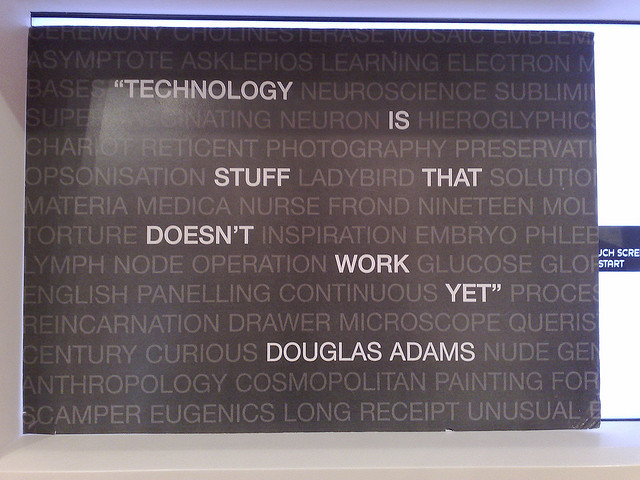“The world is more addictive than it was 40 years ago. And unless the forms of technological progress that produced these things are subject to different laws than technological progress in general, the world will get more addictive in the next 40 years than it did in the last 40.” – Paul Graham
We all know what it means to be mindful. Myriad blogs and influential commentators constantly remind us of the importance of mindfulness meditation: how it will improve our relationships and our approach to life’s challenges, as well as our physical and mental health.
However, just how many of us stop to consider how our constant use of technology affects us? For good or ill, the digital technologies we use every day affect our minds and our bodies, often in ways that we are blissfully unaware of.
Digital technologies are currently addictive and attention scattering, but what if the quality of mind and body sought by a mindfulness practice could be built into our software and hardware?
Such a state of affairs is not impossible to achieve. The Stanford University scholar Alex Soojung Kim Pang suggests that it is possible for engineers to create hardware and software that teaches us “how to use information technologies and social media so they’re not endlessly distracting and demanding, but instead help us be more mindful, focused and creative.”
Currently, Pang says, “the designs of devices and our mental models about the interactions and ourselves…often carry unexamined assumptions about how information technologies work and how we work that are detrimental to us.” If we employed what Pang calls “contemplative computing, however, we could use technology to work for us, not against us.
Technology thought leader Linda Stone similarly comments that current computing is a distracting affair that can lead to pernicious physical and mental effects, such as email apnea. Stone coins the term “conscious computing” as computing which “allows technology to become a prosthetic for engaging with our full potential.”
Developing conscious computing will be a tall order, however—especially when we consider that current software and hardware are designed specifically to encourage addictive behaviour.
The work of user experience designers is particularly illuminating here, as it is their job to design digital experiences that are simultaneously pleasing and addictive.
For example, take the fact that the majority of the top websites and services in the world use the infinite scroll mechanism. The use of the infinite scroll is very similar in style to slot machines and has been documented to have the same effect on the user. It is very difficult to look at your Facebook feed or Pinterest and not be compelled to scroll down a bit more, and a bit more, and a bit more, just to find out what happens next.
These digital experiences are all the more addictive if we consider that the information or news feeds contained within these services are designed specifically for us. No two news feeds are exactly alike—a marvel of software engineering; and, because our information feeds on personalized platforms, it encourages evermore addictive behaviour to them. The work of Nir Eyal is particularly important in this respect. He writes extensively on the ways technology is specifically designed to engender certain habits in the user, which increases their use and, therefore, profitability.
In particular, Eyal writes about how internet companies specifically create reward systems in their products to keep us coming back for more. The reason we keep coming back to our favourite digital technologies is that they tap into our primal need for obtaining the maximum source of pleasure from a certain source. The things we do online in general require little or no conscious thought; they are what psychologists describe as automatic behaviours stimulated by situational cues.
Our actions in the digital space are therefore largely engineered.
However, this is not the fault of technology companies. When their economic survival is predicated on the number of users they have in their portfolio, engineering products and services that are as usable and compelling as possible is an economic imperative. Eyal has created his analytical model called “The Hook” to describe this phenomenon of linking digital experiences to our daily routines and emotions.
The Hook is formed by four components:
1) Trigger: the element that sparks a behaviour (such as an email or a notification);
2) Action: the behaviour completed in anticipation of a reward (such as clicking on a photo or a discussion online);
3) Variable Rewards: giving people rewards on different occasions for using the service (notifications of shares or likes on social networks);
4) Investment: users invest some effort into increasing the level of their reward when they next use the service (such as uploading photos, Tweeting, etc).
We have greater access to technologies than ever before with our growing portfolio of digital devices and services. The challenge is to develop technologies that can reinforce healthful habits such as focus, habit building and compassion. By co-opting our need for variable rewards, we can create positive, connective and wise user habits that seep into our lives outside the screen.
Author: Lawrence Ampofo
Editor: Caroline Beaton
Photo: Flickr






Read 1 comment and reply